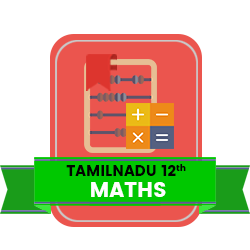10th Standard CBSE Maths Subjects Question Paper Software Subscription
QB365 covers complete information about 10th Standard CBSE Maths Subject for 2024-2025 Exam. Question Bank includes 10th Standard CBSE Maths Subjects Book back, exercise, Updated Question types MCQ, Case Study , Assertion and reason with solution, Previous year asked questions, all possible questions and other key points also. All question with detailed answers are readily available for preparting Maths question papers.
All Chapters Covered

Create Unlimited Question Papers

Access anywhere anytime

Multiple Pattern Question Papers
Share your Question Paper

Font size, line spacing, watermark etc,
Our Other Subjects for 10th Standard CBSE
10th Standard CBSE Maths Chapters / Lessons
Quadratic Equations
Arithmetic Progressions
Circles
Constructions
Some Applications of Trigonometry
Probability
Coordinate Geometry
Areas Related to Circles
Surface Areas and Volumes
Real Numbers
Polynomials
Pair of Linear Equation in Two Variables
Triangles
Introduction to Trigonometry
Statistics
10th Standard CBSE Maths Chapters / Lessons Syllabus
NUMBER SYSTEMS
REAL NUMBERS
Euclid’s division lemma, Fundamental Theorem of Arithmetic - statements after reviewing work done earlier and after illustrating and motivating through examples, Proofs of irrationality of 2, 3, 5 Decimal representation of rational numbers in terms of terminating/non-terminating recurring decimals.
ALGEBRA
POLYNOMIALS
Zeros of a polynomial. Relationship between zeros and coefficients of quadratic polynomials. Statement and simple problems on division algorithm for polynomials with real coefficients.
PAIR OF LINEAR EQUATIONS IN TWO VARIABLES
Pair of linear equations in two variables and graphical method of their solution, consistency/inconsistency.
Algebraic conditions for number of solutions. Solution of a pair of linear equations in two variables algebraically - by substitution, by elimination and by cross multiplication method. Simple situational problems. Simple problems on equations reducible to linear equations.
QUADRATIC EQUATIONS
Standard form of a quadratic equation ax2 + bx + c = 0, (a ≠ 0). Solutions of quadratic equations (only real roots) by factorization, by completing the square and by using quadratic formula. Relationship between discriminant and nature of roots
Situational problems based on quadratic equations related to day to day activities to be incorporated.
ARITHMETIC PROGRESSIONS
Motivation for studying Arithmetic Progression Derivation of the nth term and sum of the first n terms of A.P. and their application in solving daily life problems.
COORDINATE GEOMETRY
LINES (In two-dimensions)
Review: Concepts of coordinate geometry, graphs of linear equations. Distance formula. Section formula (internal division). Area of a triangle.
GEOMETRY
TRIANGLES
Definitions, examples, counter examples of similar triangles.
(Prove) If a line is drawn parallel to one side of a triangle to intersect the other two sides in distinct points, the other two sides are divided in the same ratio.
((Motivate) If a line divides two sides of a triangle in the same ratio, the line is parallel to the third side.
(Motivate) If in two triangles, the corresponding angles are equal, their corresponding sides are proportional and the triangles are similar.
(Motivate) If the corresponding sides of two triangles are proportional, their corresponding angles are equal and the two triangles are similar.
(Motivate) If one angle of a triangle is equal to one angle of another triangle and the sides including these angles are proportional, the two triangles are similar
(Motivate) If a perpendicular is drawn from the vertex of the right angle of a right triangle to the hypotenuse, the triangles on each side of the perpendicular are similar to the whole triangle and to each other.
(Prove) The ratio of the areas of two similar triangles is equal to the ratio of the squares of their corresponding sides.
(Prove) In a right triangle, the square on the hypotenuse is equal to the sum of the squares on the other two sides.
(Prove) In a triangle, if the square on one side is equal to sum of the squares on the other two sides, the angles opposite to the first side is a right angle.
CIRCLES
Tangent to a circle at, point of contact
(Prove) The tangent at any point of a circle is perpendicular to the radius through the point of contact.
(Prove) The lengths of tangents drawn from an external point to a circle are equal.
CONSTRUCTIONS
Division of a line segment in a given ratio (internally).
Tangents to a circle from a point outside it.
Construction of a triangle similar to a given triangle.
TRIGONOMETRY
INTRODUCTION TO TRIGONOMETRY
Trigonometric ratios of an acute angle of a right-angled triangle. Proof of their existence (well defined); motivate the ratios whichever are defined at 0o and 90o . Values (with proofs) of the trigonometric ratios of 30o, 45oand 60o . Relationships between the ratios.
TRIGONOMETRIC IDENTITIES
Proof and applications of the identity sin2 A + cos2 A = 1. Only simple identities to be given. Trigonometric ratios of complementary angles.
HEIGHTS AND DISTANCES: Angle of elevation, Angle of Depression - Simple problems on heights and distances. Problems should not involve more than two right triangles. Angles of elevation/depression should be only 30o , 45o, 60o .
MENSURATION
AREAS RELATED TO CIRCLES
Motivate the area of a circle; area of sectors and segments of a circle. Problems based on areas and perimeter/circumference of the above said plane figures. (In calculating area of segment of a circle, problems should be restricted to central angle of 60°, 90° and 120° only. Plane figures involving triangles, simple quadrilaterals and circle should be taken.)
SURFACE AREAS AND VOLUMES
Surface areas and volumes of combinations of any two of the following: cubes, cuboids, spheres, hemispheres and right circular cylinders/cones. Frustum of a cone - Problems involving converting one type of metallic solid into another and other mixed problems. (Problems with combination of not more than two different solids be taken).
STATISTICS AND PROBABILITY
STATISTICS
Mean, median and mode of grouped data (bimodal situation to be avoided). Cumulative frequency graph.
PROBABILITY
Classical definition of probability. Simple problems on single events (not using set notation).
Real Numbers
Introduction-Euclid’s Division Lemma-The Fundamental Theorem of Arithmetic-Revisiting Irrational Numbers-Revisiting Rational Numbers and Their Decimal Expansions
Polynomials
Introduction-Geometrical Meaning of the Zeroes of a Polynomial-Relationship between Zeroes and Coefficients of a Polynomial-Division Algorithm for Polynomials
Pair of Linear Equations in Two Variables
Introduction-Pair of Linear Equations in Two Variables-Graphical Method of Solution of a Pair of Linear Equations-Algebraic Methods of Solving a Pair of Linear Equations-Equations Reducible to a Pair of Linear Equations in Two Variables
Quadratic Equations
Introduction-Quadratic Equations-Solution of a Quadratic Equation by Factorisation-Solution of a Quadratic Equation by Completing the Square-Nature of Roots
Arithmetic Progressions
Introduction-Arithmetic Progressions-nth Term of an AP-Sum of First n Terms of an AP
Triangles
Introduction-Similar Figures-Similarity of Triangles-Criteria for Similarity of Triangles-Areas of Similar Triangles-Pythagoras Theorem
Coordinate Geometry
Introduction-Distance Formula-Section Formula-Area of a Triangle
Introduction to Trigonometry
Introduction-Trigonometric Ratios-Trigonometric Ratios of Some Specific Angles-Trigonometric Ratios of Complementary Angles-Trigonometric Identities
Some Applications of Trigonometry
Introduction-Heights and Distances
Circles
Introduction-Tangent to a Circle-Number of Tangents from a Point on a Circle
Constructions
Introduction-Division of a Line Segment-Construction of Tangents to a Circle
Areas Related to Circles
Introduction-Perimeter and Area of a Circle-A Review-Areas of Sector and Segment of a Circle-Areas of Combinations of Plane Figures
Surface Areas and Volumes
Introduction-Surface Area of a Combination of Solids-Volume of a Combination of Solids-Conversion of Solid from One Shape to Another-Frustum of a Cone
Statistics
Introduction-Mean of Grouped Data-Mean of Grouped Data-Median of Grouped Data-Graphical Representation of Cumulative Frequency Distribution
Probability
Introduction-Probability-A Theoretical Approach
Features in Question Paper Preparation software

(or) type Question

Add or Remover

Sub Questions

Adding Notes

Multiple Pattern

All subjects available
How to Create 10th Standard CBSE Maths Question Paper


10th Standard CBSE Maths
- Covers all chapters
- Unique Creative Questions
- Unlimited Question Paper
- Multiple Patterns & Answer keys
3888
3499



